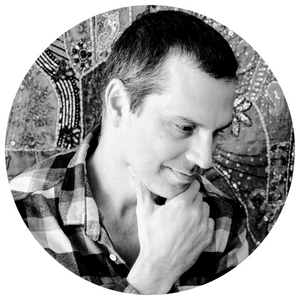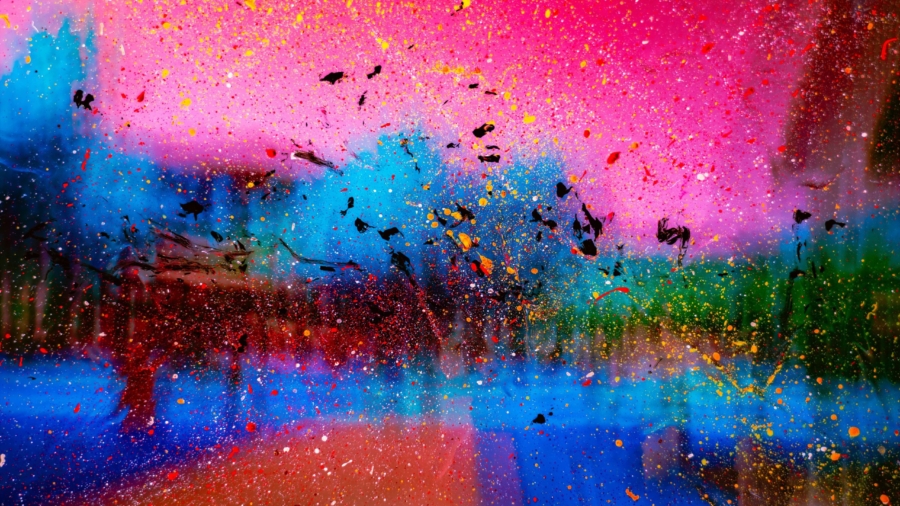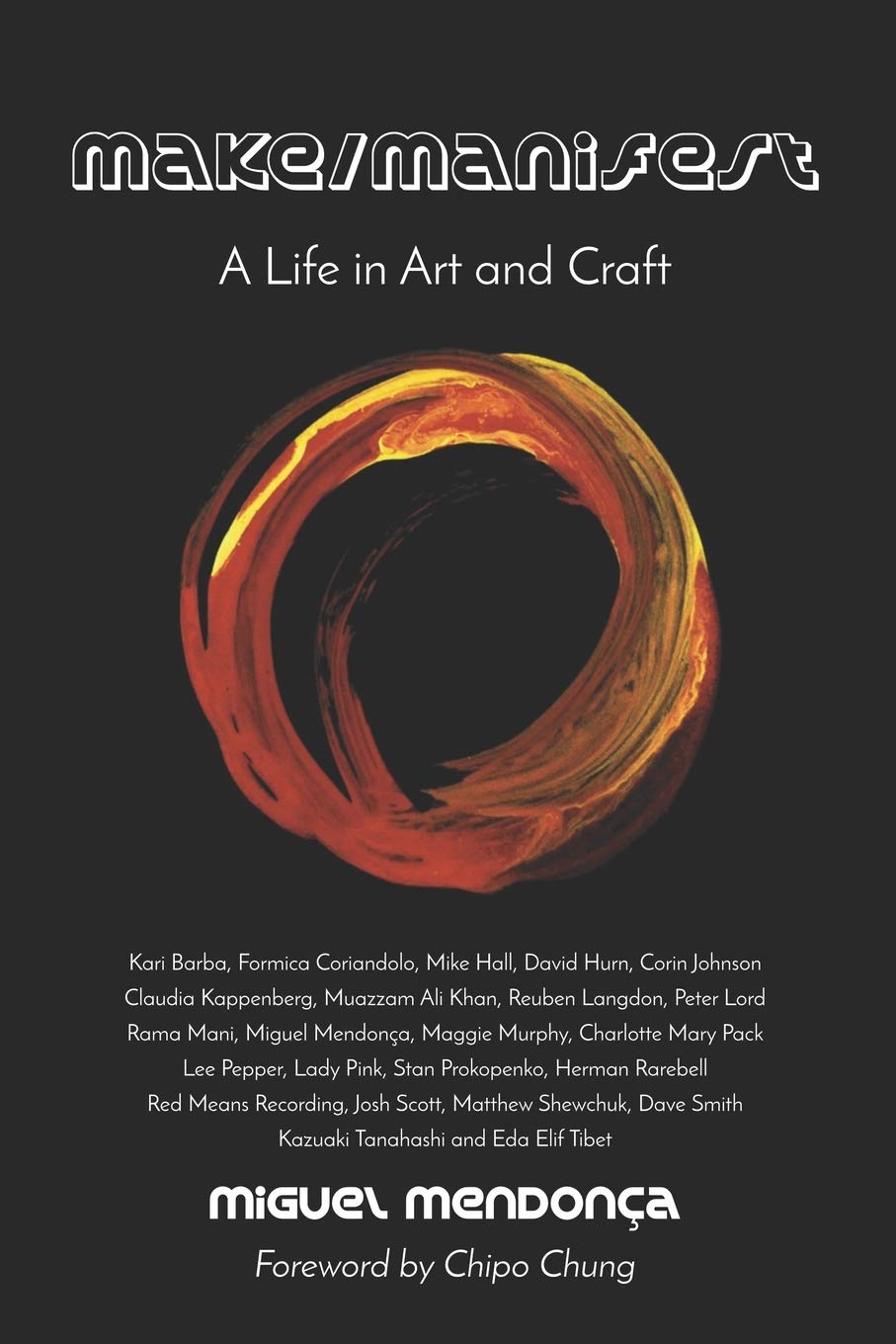By Miguel Mendonça
The joy of creativity is its unbounded nature. In its essence, creativity seems to be one with the force of life itself. If life is fundamentally creative, then everything is an expression of that creative force. So, those who feel intimidated by the idea of seeking and expressing their own creativity can be reassured that it is in every heartbeat, every moment, every thought, word and deed.
Which immediately makes me think of the moral dimension of creativity. One can be a creative torturer, for example. Creativity feeds into the machinery of war, poverty, famine and environmental destruction, and the social, ethical and psychological decay that has increasingly defined our age. The effort to design weapons, surveillance systems and policies which make the rich richer and the poor poorer have surely been fed by the same resource that others draw upon to oppose them, in whatever manner they can. Creativity sits at the heart of all human action.
Being the fundamentally emotional beings that we are, art, I would think, has been fueled far more by the passions of love and anger than by passive philosophical interest in objects or events. But the philosophical aspect of art is of great interest to me, in terms of definition and purpose. Defining art seems to be one of those eternal questions. Having no academic background in art history, I can only offer insight from my own creative work, and I have found that at its most essential, art serves the processing of experience. It has an element of synesthesia, where the experience of one thing is expressed as another. So heartbreak can be represented in a melancholic melody in D minor. Or the essence of a memory can be caught in a few swift stabs of color on canvas. Some attempt photorealism, an absolute facsimile, while others may move through levels of abstraction until there is nothing but the emotion you take from the form and color before you, or the wall of sound, or the movements of the human form. The depth of what those expressions can evoke is astounding, and this has a way of holding us in the moment, quite against the currents of life which seem designed to sweep us ever downriver with only a dim sense of control.
Art reaches into realms which evoke Taoist principles. As Poem One of the Tao Te Ching says, ‘The Tao that can be told is not the eternal Tao. The name that can be named is not the eternal name.’ The Tao is something eternally nameless, yet apparent in our experience of it. It is considered by some as the ground of all being, the underlying principle of existence. Similarly, among its many applications, art is a means to express some sense of the conditions of our existence which may otherwise be beyond language. Perhaps some poets can reflect them, but intellectual understanding can be surrendered willingly and without shame in the face of existential mystery. Yet if one listens to Holst, the cosmic awe is right there. It lights up our spirit and imagination and lets us play among the stars, released from logical and material constraints.
It would be a true pleasure to list 100 songs that have accompanied me in life, and given formless form to feeling and experience. They take me immediately to times, places and relationships across dozens of countries, and almost five decades. Some of them dash through the mind and body like the Tasmanian Devil, whipping up a storm of memory and emotion. Others are like slipping into a warm bath. Scent, for some reason, has that same ability to snap us back to a point in time and space. And sure enough, there are true artists working in the realms of perfume and incense.
So what is it that drives the producers of art and craft? In my book Make/Manifest – A Life in Art and Craft, the 25 artists I interviewed shared many stories of passion, inspiration and determination. Like so many other creative individuals around the world and down through the ages, they have sacrificed time with their children, their partners and their friends. They have in some cases foregone better paying work, or other opportunities in life. And for what? We loop back around to that creative force. Some of us have an irresistible need to make, to manifest, to bring things into the world. Most have simply always been this way. They do what they are, they are what they do.
Sometimes we do not know where the inspiration comes from. In my glass work I would sometimes clear my mind and say out loud, “Show me.” And before long that open channel would start to flow with imagery, geometry, color and feeling. It is just the same when I make music. It seems that things are trying to get into the world through us. And in so doing, others will benefit. In my environmental career, my colleague and mentor Herbert Girardet, whom I interviewed in my book Wisdom: Now and Always, once said to me, “We can never know the effect our work will have.” He was referring to its life beyond us, when it goes into the world and meets people we never will. I think of the sculptor Corin Johnson, whom I interviewed for Make/Manifest. He shared the experience of driving past crowds of tourists outside Westminster Abbey, as they photograph his sculpture on that storied building. They do not know him personally, but they take something personal from his work. Likewise Maggie Murphy will never truly know the effect of her contribution to 30 years of television, seen by hundreds of millions of people around the world. Many of the interviewees have interaction with their fans, but the bulk of their influence will always be hidden. And yet it is the most exciting aspect of creativity to me: the unknowable influence. If we do what we do with love, we are assured of changing lives for the better, to whatever degree.
The immediate effect of working on this project is connected with others from this year, 2020. I interviewed 25 people for Wisdom, eight others on their peace work, and half a dozen on the theme of home. The interview with Claudia Kappenberg started a shift that was accelerated notably by the discussion with Rama Mani, and with Jan Oberg. Jan is a peace expert who is also a photographer. He is attempting to articulate ‘peace photography’, as opposed to war photography. For that book I also had discussions with Yongey Mingyur Rinpoche, Evelin Lindner, Richard Falk, David Krieger, John Avery, Sulak Sivaraksa and Elisabet Sahtouris, all of whom opened my heart and mind in profound ways. And during the Make/Manifest interview with Muazzam Ali Khan, I had to take my socks off and scrunch the shag pile carpet with my toes to stay grounded. As we discussed connecting with God during Qawwāli performances, my mind filled with such intense light that I could barely stay connected to the earth. Out of all these experiences, one thing came through more strongly than any other: the desire for integration and liberation.
This was articulated as the desire to move from the left-brain analytical approach, and instead find the place where I feel most real, honest and whole. And that is when I see the world through the lens of art, and express myself likewise. I find poetry spilling out of me through the day, in response to every imaginable observation, memory and encounter. That sense of release, of permission to make art, is a gift from all these people. My fondest hope for the book is that the reader will likewise be inspired and supported in letting their creativity loose, and expressing a more fuller sense of self. Because that is what art offers us, in the end. Most of our processing is done subconsciously. It works itself out in dreams, or finds expression in emotions that we do not fully understand. But to make art is to allow that channel to be open in a more conscious way, and the world becomes a brighter, more colorful and honest place because of it.
While on a peace mission in Africa, Rama had the epiphany that creativity and peace were closely intertwined. This led her into internal conflict about releasing her own self-judgment about people losing respect for her if she came out as an artist. And to her surprise, those same people have been impacted the most by her performances.
Formica similarly shared the story of the Damanhur community letting go of judgment in their quest to explore human potential through art. And the work they have produced is spectacular. This echoes the ‘playful investigation’ of Claudia’s work. That term has for me a special attraction. As children we are encouraged to explore our creativity, but increasingly there seems to be an educational focus on the foundations of the global economy: the STEM subjects of science, technology, engineering and mathematics. Though creativity is fundamental to all human endeavor, the arts are lower down the academic pecking order than ever. As Lady Pink commented, there is often a strong preference for supporting sport over the arts, so if schools face budget constraints, they are typically more likely to cut arts than sports. The take-up of arts subjects has been declining in UK schools, with special mentions for performing arts including dance, music and drama. And yet there has been a significant rise in adult crafting and other arts interests. In addition, art therapy has become an increasingly widespread and popular therapeutic approach for supporting those with mental, emotional and physical health issues. The process of creation has a way of unlocking and releasing trauma, and thereby helping us to heal. Rama shared with us the ancient Greek practice of using art as a means to prepare us for healing, and the way they used theatre for shared catharsis. Returning to the question of the primacy of creativity in existence, it should be no surprise that we have a need to channel creativity throughout our lives. If we suppress the very nature of existence itself, that can never be healthy.
Art and creativity offer a huge variety of benefits and meanings. Above all else, I believe its primary function is its role in developing self-knowledge. Not only can it help us to understand and express ourselves in a positive way, it can also let others into aspects of ourselves that may often be beyond words. How many of us have had the experience of seeing the artwork of a loved one and being surprised, even intrigued? We all have hidden depths, and art can expose aspects of them in a way that can foster more intimacy, both within and between us. There will always be a need to better understand ourselves and each other, and so much is submerged where it could or should find a healthy outlet. We are living through a time of excessive and increasing polarization, anger and distrust. One can readily imagine that if all concerned had a daily creative practice, much of this would be opened up, decompressed and understood in a more honest, and perhaps less judgmental way. As part of a more holistically healthy lifestyle, involving connection with nature and loved ones, good diet, personal time and so on, art can bring us to a more centered, calm, open-hearted and open-minded place. This way lies peace and wisdom, which the world is more in need of than ever.
And as Lady Pink said, the basic motivation for the art that has a through line from cave art spray painted with red ochre, to the graffiti sprayed on walls around the world, is to know that we are alive, to leave something behind, to say to the world, “I was here.”

MIGUEL MENDONÇA is a writer and researcher. In his nine books he has investigated a variety of topics, including sustainability, consciousness, spirituality and metaphysics, wisdom, and art and creativity.
On the web
www.miguelmendonca.com
Bookshelf
MAKE/MANIFEST: A LIFE IN ART AND CRAFT BY MIGUEL MENDONÇA, Independently published, paperback (346 pages).



